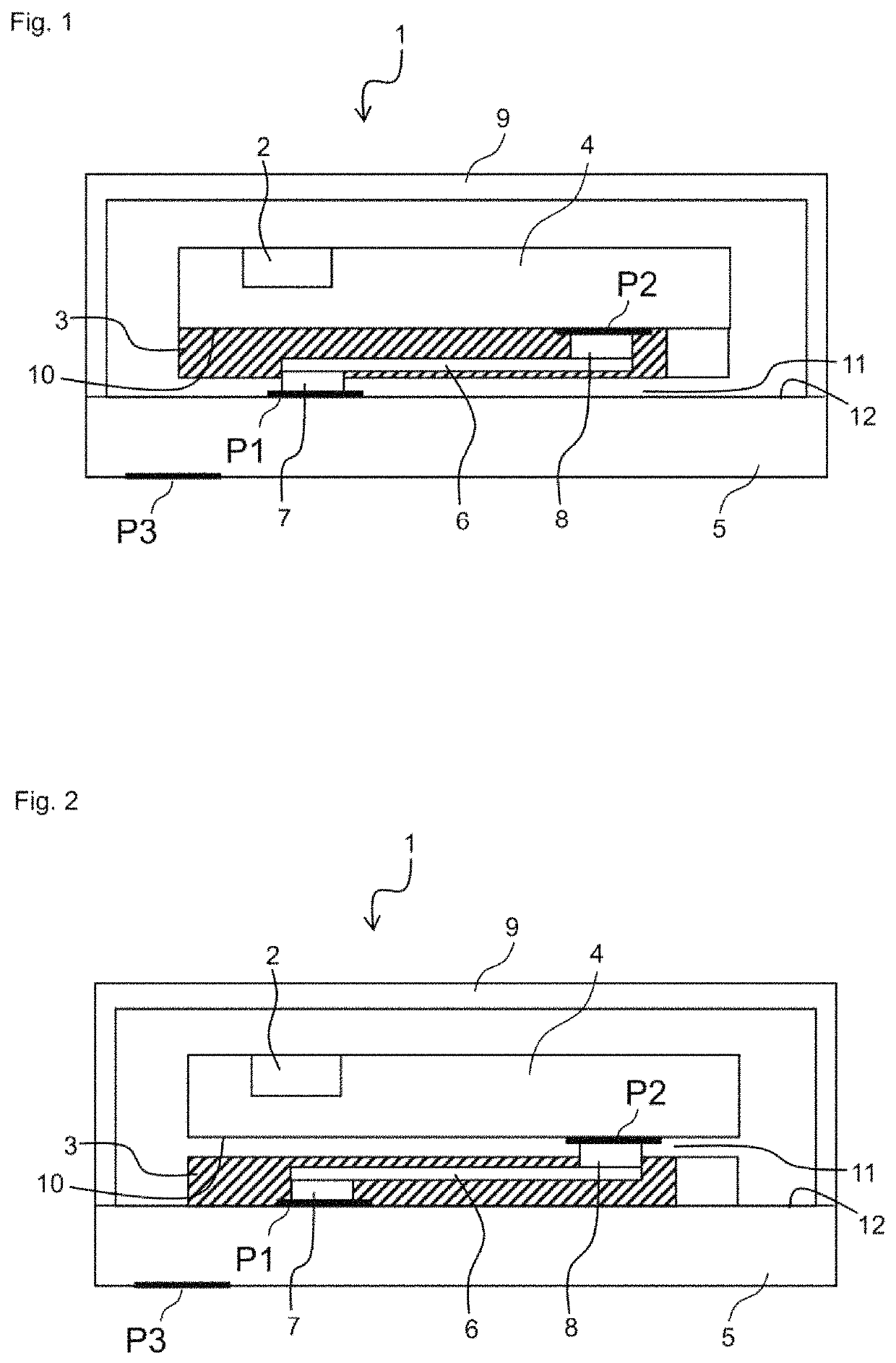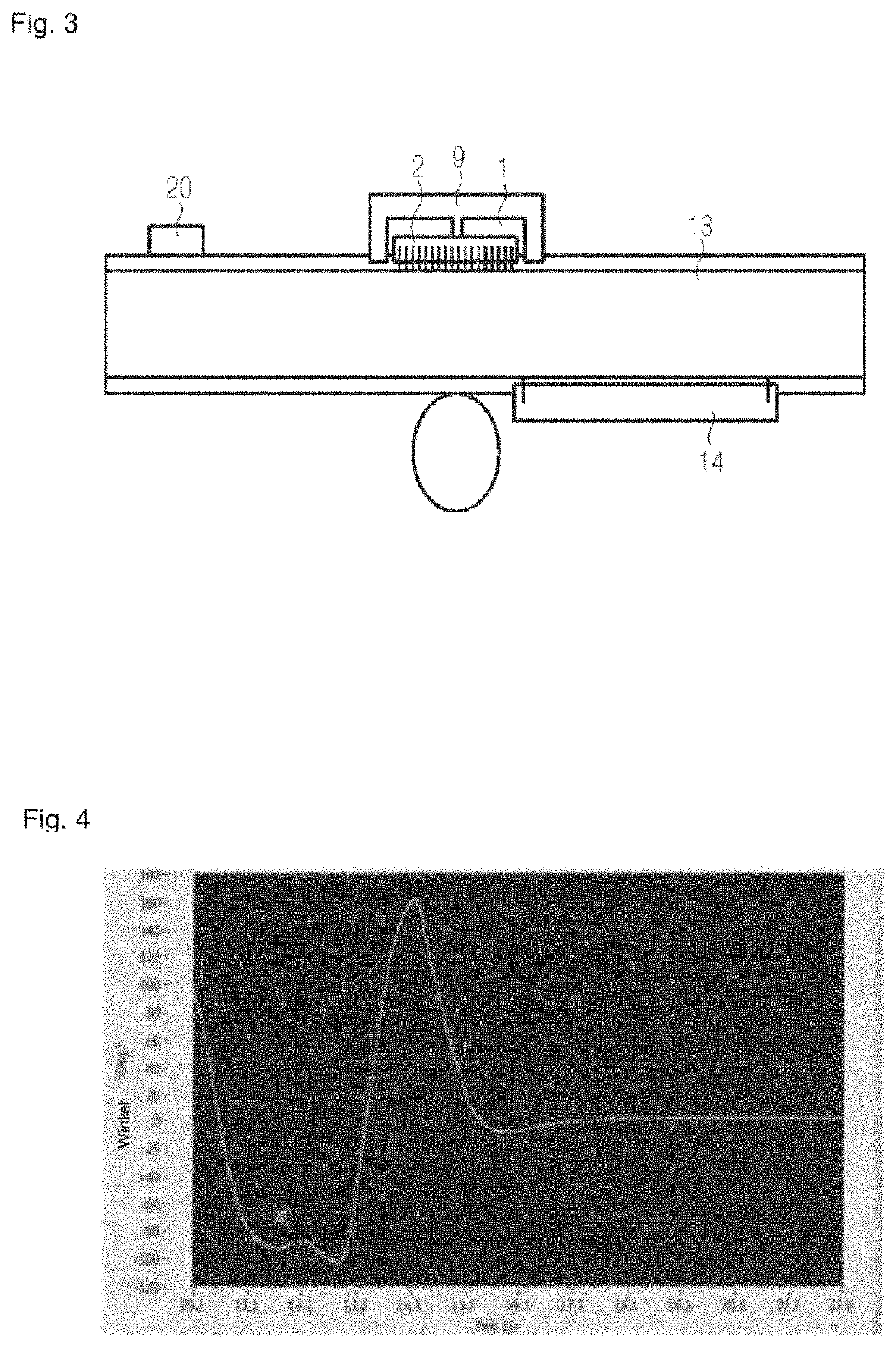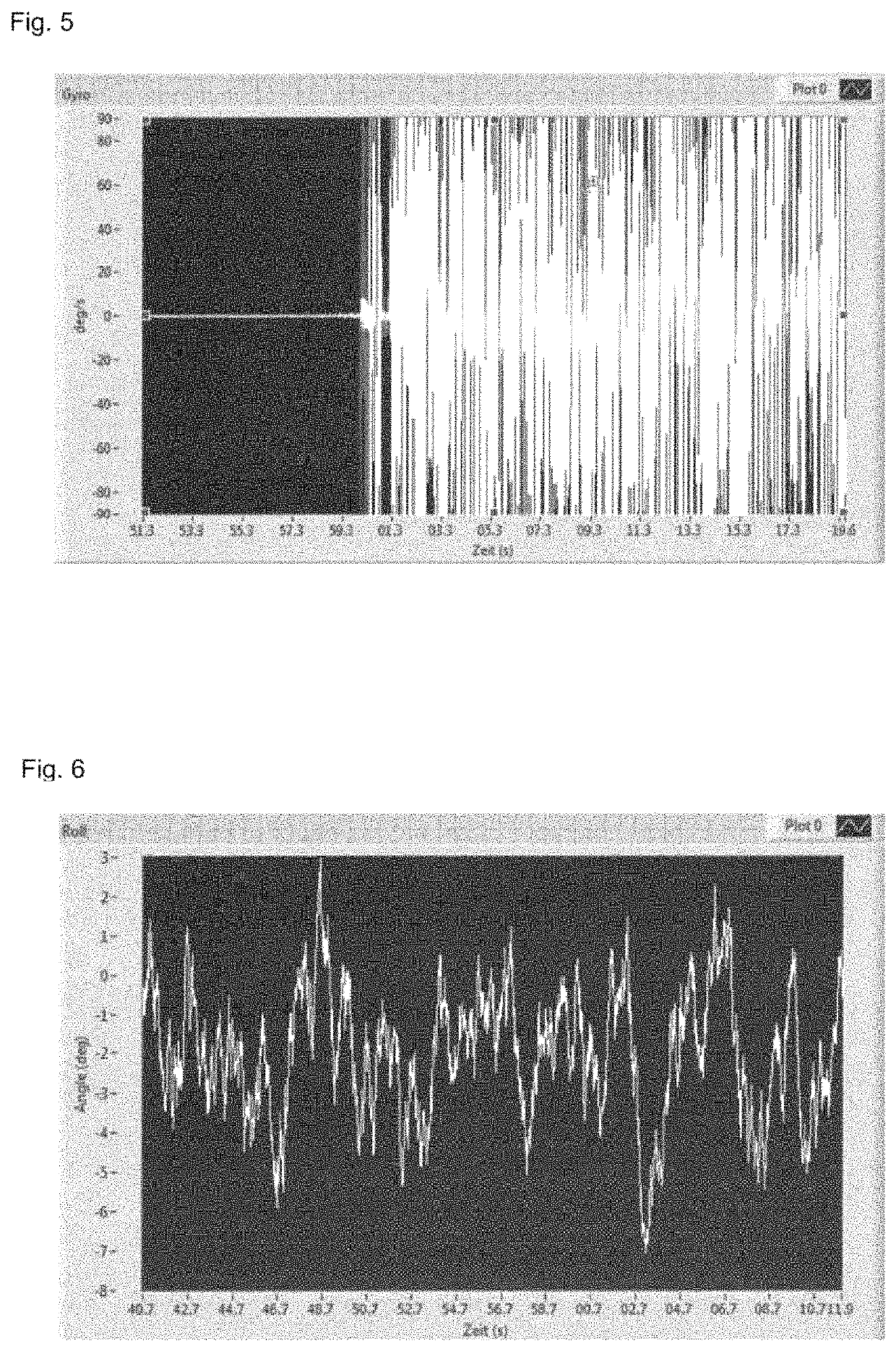Method for measuring a behavior of a MEMS device
a technology of mems device and behavior, which is applied in the field of mems device behavior measurement, can solve the problems of gyroscope, major malfunction of mems device, and unreliable data, and achieve the effect of reducing the width of the air gap
- Summary
- Abstract
- Description
- Claims
- Application Information
AI Technical Summary
Benefits of technology
Problems solved by technology
Method used
Image
Examples
Embodiment Construction
[0051]A method for measuring a behavior of a MEMS device 1 comprising an inertial sensor 2 is disclosed. The behavior may, in particular, be a mechanical attenuation behavior in response to a vibration applied to the MEMS device 1. Such a measurement is particularly relevant for a MEMS device 1 which comprises a damping structure 3 configured to attenuate a vibration of the inertial sensor 2. FIGS. 1 and 2 show such a MEMS device 1.
[0052]It is the purpose of the measurement to evaluate the performance of the MEMS device 1 when the MEMS device 1 is subjected to a mechanical disturbance, e.g., a vibration. The measurement is designed to determine if the inertial sensor 2 can provide reliable information even if a vibration is applied to the MEMS device 1. Moreover, the measurement is designed to determine an attenuation of a vibration of the MEMS device 1. For example, the measurement setup is designed to determine how long it takes, after the disappearance of a disturbance in form of...
PUM
 Login to View More
Login to View More Abstract
Description
Claims
Application Information
 Login to View More
Login to View More - R&D
- Intellectual Property
- Life Sciences
- Materials
- Tech Scout
- Unparalleled Data Quality
- Higher Quality Content
- 60% Fewer Hallucinations
Browse by: Latest US Patents, China's latest patents, Technical Efficacy Thesaurus, Application Domain, Technology Topic, Popular Technical Reports.
© 2025 PatSnap. All rights reserved.Legal|Privacy policy|Modern Slavery Act Transparency Statement|Sitemap|About US| Contact US: help@patsnap.com



